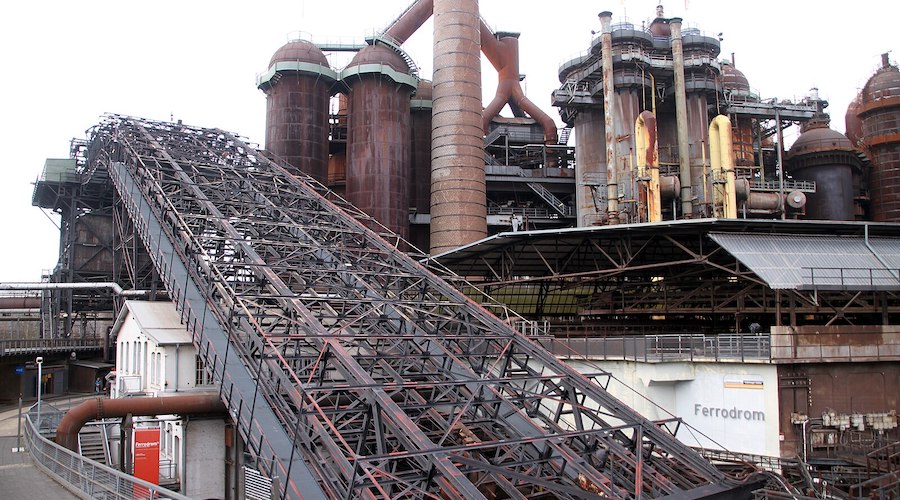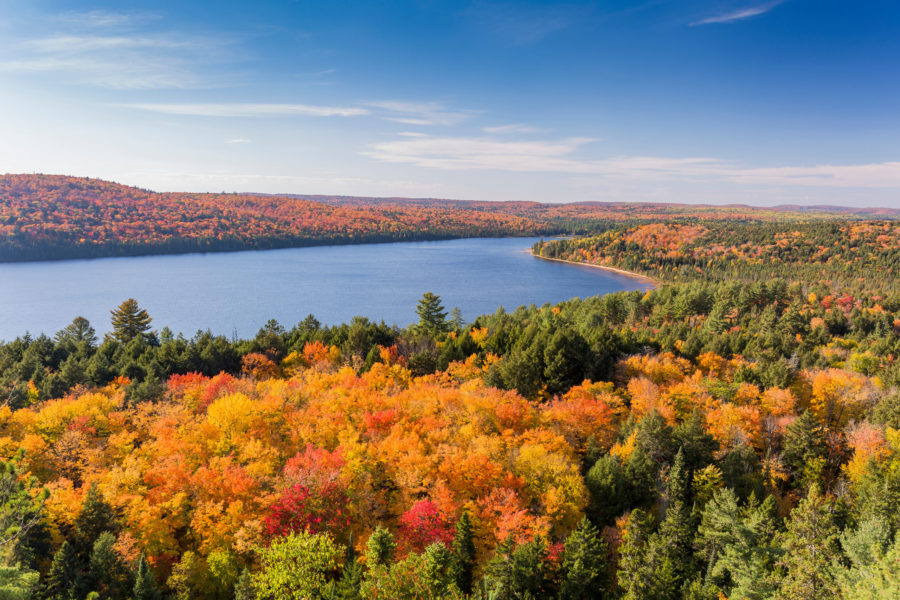Germany fights to green production of most important commodity

In Germany’s industrial heartland, a slender spire of tubes rises amid a cluster of smoke-belching foundries. Owned by Salzgitter AG, Germany’s second-largest steelmaker, the installation is an ambitious attempt to revolutionize the steelmaking process, and ultimately, secure a critical piece of the country’s economy.
Steel is the most important material for Germany’s manufacturing sector, going into everything from Volkswagen AG automobiles to the advanced machinery made by Siemens AG. The metal is “the starting point of any value chain that you can think of,” Salzgitter chief executive officer Gunnar Groebler said in a Bloomberg TV interview, describing it as “an important factor in any industry in any economy.”
Yet steel is also one of the worst offenders in terms of carbon emissions. Its production techniques, which have remained unchanged for over a century and a half, rely on fossil fuel-burning furnaces that generate over one ton of carbon for each ton of steel created — more than the cement or chemicals sectors.
Speaking at the Bloomberg New Economy Gateway Europe conference outside Dublin this week, Rachel Muncrief, deputy director of the International Council on Clean Transportation, singled out steel for not getting enough attention as a “massive polluter.”
With Germany racing to achieve carbon neutrality by 2045, the switch to green steel is an early test of what kinds of heavy industry Europe will be able to retain – and adapt — in the transition to a cleaner economy.
It’s also a deeply personal question in steelmaking regions like Lower Saxony, the Ruhr valley and Saarland. If beleaguered German steel companies Thyssenkrupp AG, Salzgitter and Dillinger Hüttenwerke falter, firms like Mercedes-Benz AG and BMW AG will have to turn elsewhere for supplies. That could potentially lead manufacturing supply chains to drift overseas, and would close a chapter on a key part of the country’s industrial heritage.
“Not managing to achieve this transformation to clean technologies means the end of steel here,” said Juergen Barke, economy minister of Saarland, which witnessed the closure of an ironworks factory that produced steel helmets for the Kaiser’s armies in World War I. “It’s a question of survival.”
Salzgitter’s site in the gentle hills of Lower Saxony is a case study in real-time structural change. While molten metal streams from the bowels of the three coal-fired blast furnaces on one edge of the sprawling facility, elsewhere on the site, a twist of pipes uses power from nearby wind turbines to convert water into hydrogen, which then gets pumped into chambers to refine raw iron ore into purified pellets, known as sponge.
In contrast to traditional foundries, iron used in the green steel process doesn’t need to be melted. To complete the conversion, the purified ore is combined with other elements in an electric-powered furnace akin to a giant pressure cooker. The process eliminates some 97% of carbon emissions but implementing it doesn’t come cheap: while Salzgitter has already secured nearly €1 billion ($1.07 billion) in state aid, the first phase of the transition alone is expected to cost the company as much as €2.4 billion.
To make green steel production work over long haul, Salzgitter needs to ensure that it has enough renewable power and the right infrastructure to convert energy into hydrogen – and that customers, or governments, are willing to cover the potentially greater costs.
Under pressure from investors and regulators, steelmakers across Europe are pouring resources into the challenge. Salzgitter aims to convert all three of its traditional foundries by 2033, and other competitors are getting ready as well. ArcelorMittal is investing in facilities in France and Belgium, while in Sweden, SSAB and startup H2 Green Steel are working on projects that would tap the country’s hydropower resources.
All this is just a small window into Germany’s larger struggle to prove that it has a future both as a net-zero country and an energy-intensive production location. The imperative of hitting climate goals means abandoning coal, the fuel around which Germany’s steelmaking regions originally sprang up, and Russia’s invasion of Ukraine has meant the end of its reliance on cheap natural gas. Moreover, as green energy executives eye the Middle East and North Africa for future production sites, Germany’s capacity to produce renewable resources is limited by its relatively small coastline and dark winters.
For the steel industry, these challenges are forcing them to consider options that would have once seemed far-fetched. Thyssenkrupp is mulling a plan that could see it reduce upstream steel production and instead import foreign steel blocks into Germany, where they would be processed into higher-value products.
While this would reduce the manufacturer’s carbon footprint, the Duisburg-based company may have little choice in the decision: to make the enough hydrogen for a year’s worth of green steel, it would need a year’s worth of power from 3,800 wind turbines — about 13% of Germany’s current capacity.
The weeds sprouting between the rusting pipes of the Voelklingen ironworks in western Germany indicate what can happen if this transition goes wrong. Once among the mightiest metal producers in Europe, the plant closed down in 1986 after failing to adapt to the onset of globalization.
At its peak in the 1960s, more than 17,000 workers labored in around-the-clock shifts to melt and mold metal at the Voelklingen factory. Now, more than three decades on, what was once a sprawling array of blast furnaces, ore conveyors and coking plants has been transformed into an art space and destination for fans of industrial history.
In a cavernous hall that used to house giant blowers to keep furnaces blazing, a video work called “When We Are Gone” by Julian Rosefeldt explores the demise of the capitalist system. Playing in a loop amid silent machinery, the film follows scientists who have returned to a barren earth to research the legacies of now-vanished cultures. It’s an unsettling critique of Germany’s existing industrial economy, and a reminder of how much work the country must undertake to adapt this economy to a net-zero future.
But the people on the front lines are optimistic.
“We need to be courageous in order to overcome the huge challenges facing German industry,” Saarland’s Barke said. “We’re working hard to make this transition a success.”
(By William Wilkes and Chris Reiter, with assistance from Lucy White)
{{ commodity.name }}
{{ post.title }}
{{ post.date }}

Comments
Sybil
But should the green steel challenge fail, what is the good of importing non green steel as surely it is the overall global net zero score that counts? Germany could boast net zero whilst the planet as a whole hasnt improved because more emissions are created elsewhere and also shipping the non green steel to Germany. Has this been thought through?